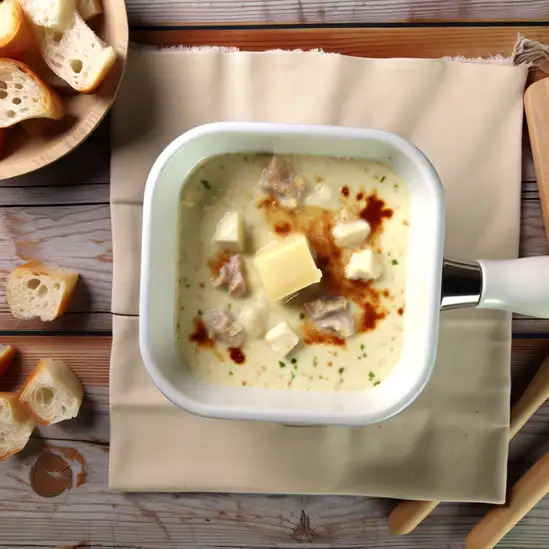



Imagine stepping into a place where the air carries the sweet scent of pine and cinnamon,and the streets hum softly with the chatter of locals and the clinking of coffee cups. That’s Canela for you—a charming town in southern Brazil that feels like a cozy retreat wrapped in nature’s embrace. The vibe here is relaxed but lively,with a touch of old-world charm thanks to its European-inspired architecture and warm,welcoming people. It’s the kind of place where you can wander without a plan,letting the rhythm of the town guide you. As you stroll through Canela’s leafy avenues,you’ll hear the gentle rush of waterfalls nearby and the occasional strum of a guitar from a street café. The colors are rich and inviting—deep greens from the surrounding forests,bright blooms in window boxes,and the warm glow of lanterns as evening falls. The local markets burst with fresh produce and handmade crafts,and the aroma of freshly baked pão de queijo (cheese bread) mingles with the earthy scent of roasted coffee. What really makes Canela stand out is its blend of nature and culture. You can hike through lush trails to stunning viewpoints,then settle into a rustic restaurant to savor hearty southern Brazilian dishes,like chimarrão tea and tender cuts of barbecue. The town’s festivals and artisan shops reflect a proud heritage,making every moment feel authentic and heartfelt. If you’re craving a place that’s both peaceful and full of life,Canela will wrap you in its gentle magic and leave you wanting more.
The information on this page is currently being reviewed by Tripkliq and should be used as a guide only
Eng word: Hello
Eng pronunciation: Oh-lah
Local language: Olá
Eng word: Goodbye
Eng pronunciation: Ah-deh-oosh
Local language: Adeus
Eng word: Thank you
Eng pronunciation: Oh-bree-gah-doo
Local language: Obrigado
Eng word: How much
Eng pronunciation: Kwahn-too koos-tah
Local language: Quanto custa
Eng word: Toilet
Eng pronunciation: Bahn-yay-roo
Local language: Banheiro
Eng word: Help me
Eng pronunciation: Ah-zhoo-dee mee
Local language: Ajude-me
Eng word: Yes
Eng pronunciation: Seem
Local language: Sim
Eng word: No
Eng pronunciation: Now
Local language: Não
Eng word: Excuse me
Eng pronunciation: Kohm lee-sen-sah
Local language: Com licença
Canela was officially founded on December 28,1944. The city was named after the 'Canela' tree, which was abundant in the region.
The Cathedral of Our Lady of Lourdes, also known as the Stone Cathedral, is one of Canela's most iconic landmarks. Built in the Gothic style, it was completed in 1987 and is a major tourist attraction.
Canela, along with its neighboring city Gramado, has developed into one of Brazil's most popular tourist destinations, known for its European-style architecture, festivals, and natural beauty.
Caracol Park is home to the stunning Caracol Waterfall, which is 131 feet high. The park is one of the most visited natural attractions in Brazil and offers hiking trails, a cable car, and panoramic views.
Steam World (Mundo a Vapor) is a unique theme park in Canela that showcases steam-powered machinery and miniatures of famous steam engines. It opened in 1991 and is a favorite among families.
Canela is famous for its Christmas Light Festival (Sonho de Natal), which transforms the city into a winter wonderland with elaborate light displays, parades, and performances during the holiday season.
Canela has a rich cultural heritage influenced by German and Italian immigrants who settled in the region. This is reflected in the city's architecture, cuisine, and festivals.
Canela is a hub for ecotourism, offering activities such as hiking, zip-lining, and horseback riding in its lush forests and scenic landscapes. The region's natural beauty attracts outdoor enthusiasts year-round.
In addition to the Christmas Light Festival, Canela hosts several other festivals throughout the year, including the Winter Festival and the International Puppet Festival, which draw visitors from all over the world.
In Canela, the most common Power Adaptor is Type N, Type C.



A popular dish in Canela, especially during the colder months, featuring melted cheese or chocolate served with various dippables.

A dish made from cornmeal, often served creamy or fried, and commonly accompanied by sauces or meats.

A traditional dish made from the seeds of the Araucaria tree, often boiled or roasted, and enjoyed as a snack or side dish.

Grilled young chicken, typically marinated and served with a variety of sides, popular in the region's Italian-influenced cuisine.

A delicious apple pie that is a local favorite, often made with fresh apples and a flaky crust, served warm.
Florianópolis feels like a breath of fresh ocean air mixed with the laid-back rhythm of island life. Imagine waking up to the gentle crash of waves and the scent of salty breeze mingling with the sweet aroma of freshly brewed coffee. This city,perched on an island off Brazil’s southern coast,effortlessly blends vibrant urban energy with the tranquility of nature. You’ll find yourself wandering through colorful markets where the chatter of locals blends with the calls of street vendors selling pastel de nata and freshly caught seafood.
What really makes Florianópolis stand out is its unique character—a mix of traditional Azorean culture and modern Brazilian flair. The streets pulse with samba beats and the laughter of surfers returning from the waves. Beaches like Joaquina and Campeche invite you to sink your toes into warm sand,while hidden lagoons and lush hills offer quiet spots to breathe and watch the sunset paint the sky in fiery hues.
The food scene here is a delicious adventure,too. Picture feasting on a steaming bowl of moqueca,rich with coconut milk and fresh fish,or savoring açaí bowls topped with tropical fruits that taste like sunshine. Whether you’re exploring the lively downtown or hiking through pine forests,Florianópolis wraps you in a welcoming embrace that feels both exciting and comforting. It’s a place where every moment invites you to slow down,soak in the beauty,and fall a little in love with life.
Imagine stepping into a city where the rhythm of samba pulses through the streets and the air carries a salty breeze mixed with the scent of fresh coconut water. That’s Rio de Janeiro for you—a place that feels alive in every sense. From the moment you arrive,you’re wrapped in a vibrant energy that’s both laid-back and electric. The city’s dramatic landscape,with its towering granite peaks like Sugarloaf and the iconic Christ the Redeemer statue watching over the bay,creates a stunning backdrop that’s impossible to forget.
Walking through Rio’s neighborhoods,you’ll hear the laughter of locals chatting in colorful markets,the distant beat of drums from a street party,and the waves gently crashing on golden beaches like Ipanema and Copacabana. The sun warms your skin as you sip on a caipirinha,the tangy lime and sweet sugar blending perfectly with the tropical heat. Food here is a celebration—imagine feijoada bubbling in a pot,or fresh seafood grilled right by the shore,each bite telling a story of the city’s rich culture.
What makes Rio truly special is its spirit—a mix of resilience,joy,and openness. People here embrace life with a contagious passion,whether they’re dancing during Carnival or simply sharing stories over a late-night meal. It’s a city that invites you to slow down,soak in the beauty,and join in the celebration of life. Trust me,once you’ve felt Rio’s heartbeat,it stays with you long after you leave.
Imagine stepping into a city that hums with energy yet feels like a warm embrace—that’s São Paulo for you. The moment you arrive,you’re swept up in a vibrant mosaic of sounds:the chatter of street vendors,the distant beat of samba mixing with the honk of traffic,and the occasional strum of a guitar from a sidewalk musician. The air carries a blend of aromas—from freshly brewed coffee wafting out of cozy cafés to the irresistible scent of pão de queijo baking nearby. It’s a city that never quite sleeps,but it never feels rushed either.
São Paulo’s character is a fascinating blend of contrasts. Towering skyscrapers stand shoulder to shoulder with colorful street art that tells stories of the city’s soul. You’ll find yourself wandering through neighborhoods where every corner reveals a new flavor or a new rhythm—whether it’s the lively markets of Liberdade with its Japanese influence or the bohemian vibe of Vila Madalena,alive with galleries and quirky bars. The people here are as diverse as the city itself,welcoming and passionate about their culture.
What makes São Paulo truly unforgettable is how it invites you to dive deep. Taste the rich,smoky flavors of a traditional churrasco,sip on a caipirinha while watching the sunset from Ibirapuera Park,or lose yourself in the buzz of Avenida Paulista on a Sunday when the streets turn into a lively festival. It’s a city that challenges you to explore,savor,and connect—and once you do,it stays with you long after you’ve left.
If you find yourself wandering through Porto Alegre,you’ll immediately notice a city that hums with a laid-back yet vibrant energy. It’s the kind of place where the warmth of the people matches the gentle breeze off the Guaíba River,and the streets pulse with a mix of old-world charm and modern creativity. Imagine sitting at a café,the rich aroma of freshly brewed coffee mingling with the distant laughter of friends sharing stories,while the sun casts a golden glow over colorful colonial buildings and leafy parks.
Porto Alegre’s character is deeply tied to its diverse roots—European immigrants,indigenous influences,and a strong gaucho culture all blend seamlessly here. You’ll hear the soulful strum of a guitar in a cozy bar or catch the lively chatter of locals debating football or politics in the city’s many open-air markets. The food scene is a delicious reflection of this mix:think smoky churrasco grilled to perfection,fresh chimarrão tea warming your hands,and sweet pastries that melt in your mouth.
What really makes Porto Alegre stand out is its genuine,unpretentious vibe. It’s a city that invites you to slow down,explore its vibrant street art,stroll along the riverfront at sunset,and dive into its rich cultural festivals. Whether you’re sipping a caipirinha while watching a live samba band or simply people-watching in a bustling square,Porto Alegre feels like a warm embrace—welcoming,alive,and full of stories waiting to be discovered.
Imagine stepping into a place where every street corner hums with rhythm and color—that’s Salvador. The city pulses with Afro-Brazilian culture,a vibrant mix of history,music,and mouthwatering food that wraps around you like a warm embrace. Walking through Pelourinho,the old town,you’re surrounded by pastel-colored colonial buildings,their walls echoing with the beats of samba and the distant call of street vendors selling acarajé—crispy,spicy black-eyed pea fritters that smell like heaven. The air carries a mix of sea breeze and the sweet scent of tropical fruits from nearby markets.
Salvador’s energy is contagious. Locals dance in the streets,their movements fluid and joyful,inviting you to join in. The city’s soul is deeply tied to its African roots,visible in the vibrant Candomblé ceremonies and the lively festivals that light up the calendar. At sunset,the golden light spills over the bay,turning the water into molten gold,while the sound of waves mingles with distant drums.
What makes Salvador unforgettable is how alive it feels—like the city itself is breathing,singing,and celebrating life. Whether you’re savoring fresh seafood by the shore,exploring colorful markets,or simply soaking in the infectious warmth of its people,Salvador leaves a mark on your heart. It’s not just a place to visit; it’s a place to feel,to dance,and to remember long after you’ve left.
If you ever find yourself craving a place where history hums through the streets and the ocean breeze carries the scent of salt and tropical flowers,Recife should be at the top of your list. This city pulses with a unique rhythm—part vibrant urban energy,part laid-back coastal charm. Walking through Recife,you’ll hear the distant strum of frevo music blending with the chatter of locals in colorful markets,while the sun casts a golden glow over colonial buildings and modern skyscrapers alike.
What really grabs you here is the way the city wears its culture on its sleeve. The streets are alive with Afro-Brazilian traditions,from the lively dance performances to the tantalizing aroma of tapioca and fresh seafood sizzling in street stalls. You can almost taste the history in the air,especially in neighborhoods like Recife Antigo,where cobblestone streets lead you past art galleries,cozy cafés,and vibrant street art that tells stories of resilience and joy.
And then there’s the water—Recife is often called the "Venice of Brazil" because of its many rivers and bridges,but it’s the beaches that steal your heart. Imagine sinking your toes into warm sand,the Atlantic waves gently rolling in,while the sun dips low,painting the sky in shades of pink and orange. It’s a city that invites you to slow down,soak in the colors,sounds,and flavors,and leave with a little more warmth in your soul than when you arrived.
Tourists may book accommodations online through fake listings or unverified platforms, only to find the property doesn't exist or is significantly different from the description.
Shops or street vendors may sell fake or low-quality souvenirs, claiming they are authentic local crafts or artisanal products.
Unsuspecting tourists may have their credit card information stolen at restaurants, shops, or ATMs through skimming devices.
Tourists may be offered fake discount coupons for restaurants or attractions, which turn out to be invalid or require hidden fees.
Scammers pose as official tour guides and offer subpar or fake tours, often charging high fees upfront.
Tourists may be charged inflated prices for guided tours, park tickets, or attractions, especially if they book through unofficial vendors or street agents.
Street performers may demand high 'donations' after tourists take photos or watch their performances, despite initially appearing free.
Some taxi drivers may take longer routes or fail to use the meter to overcharge tourists unfamiliar with the area.
The use, possession, and trafficking of drugs are illegal in Canela, as in the rest of Brazil. Penalties for drug-related offenses can be severe, including imprisonment. Tourists should avoid any involvement with illegal drugs to prevent legal issues.
In Canela, Brazil, smoking is regulated by national laws that prohibit smoking in enclosed public spaces and workplaces, including restaurants, bars, and public transportation. There are designated smoking areas where smoking is allowed. Violations can result in fines.
Vaping in Canela follows similar regulations to smoking. It is prohibited in enclosed public spaces and workplaces. Designated areas for vaping may be available, but it is advisable to check local signs and regulations to avoid fines.
What are other people saying about Canela?
Recent Social posts about Canela
There is nothing to show you for now.